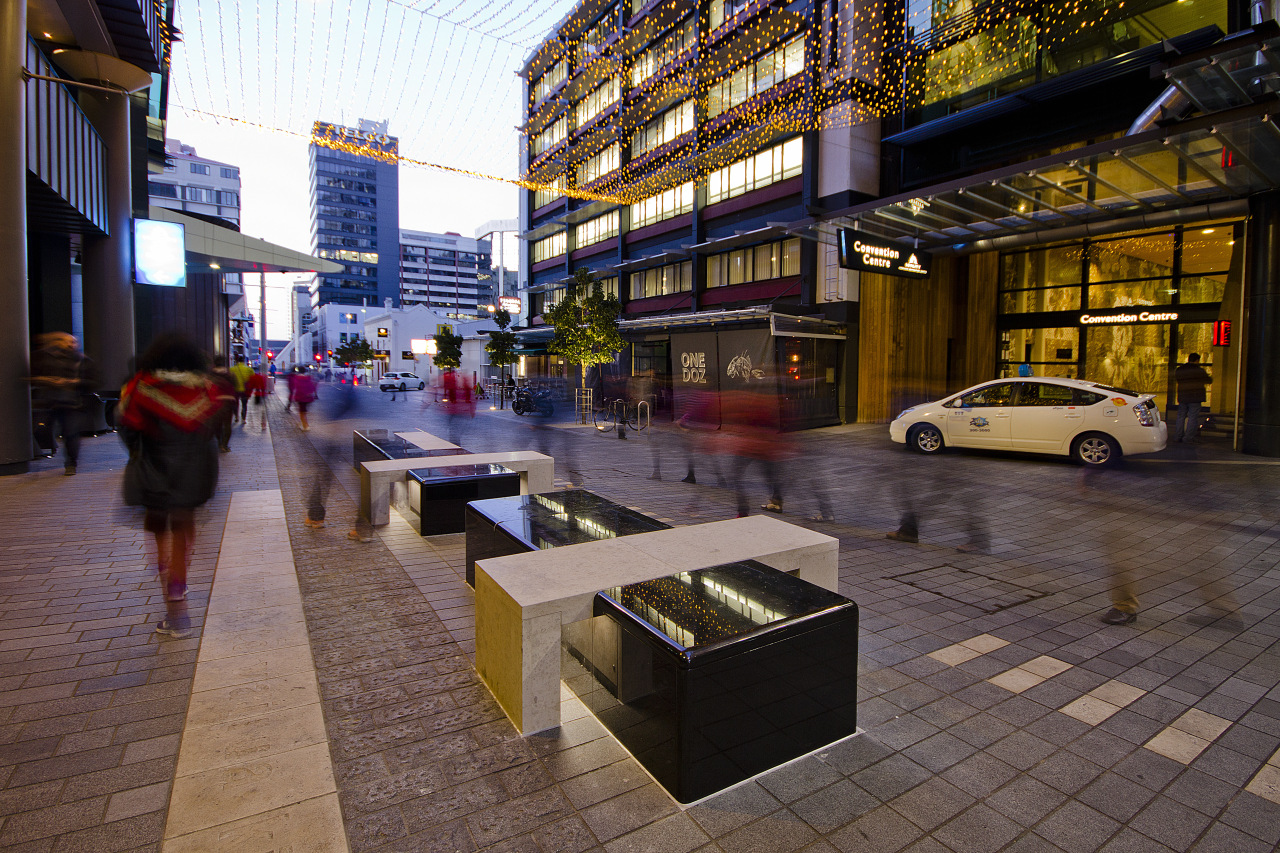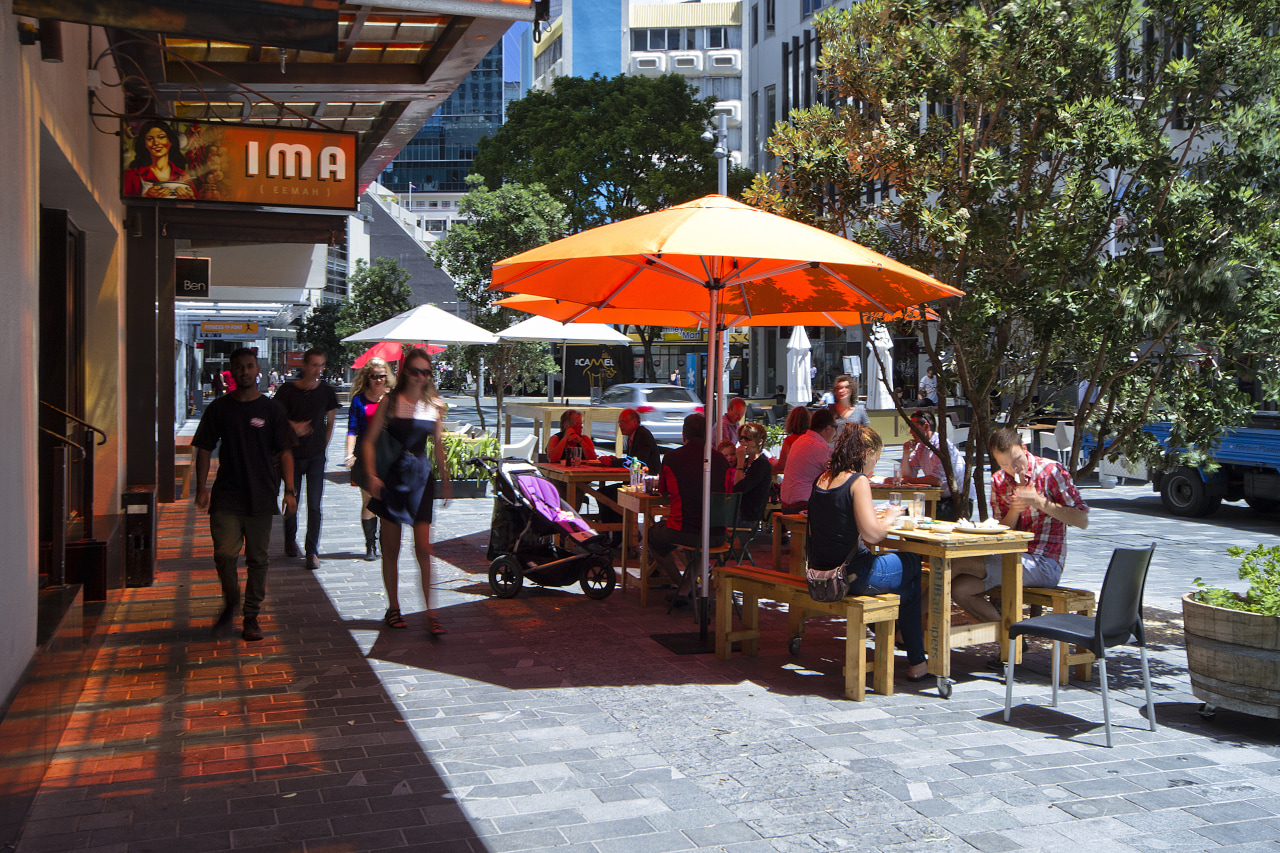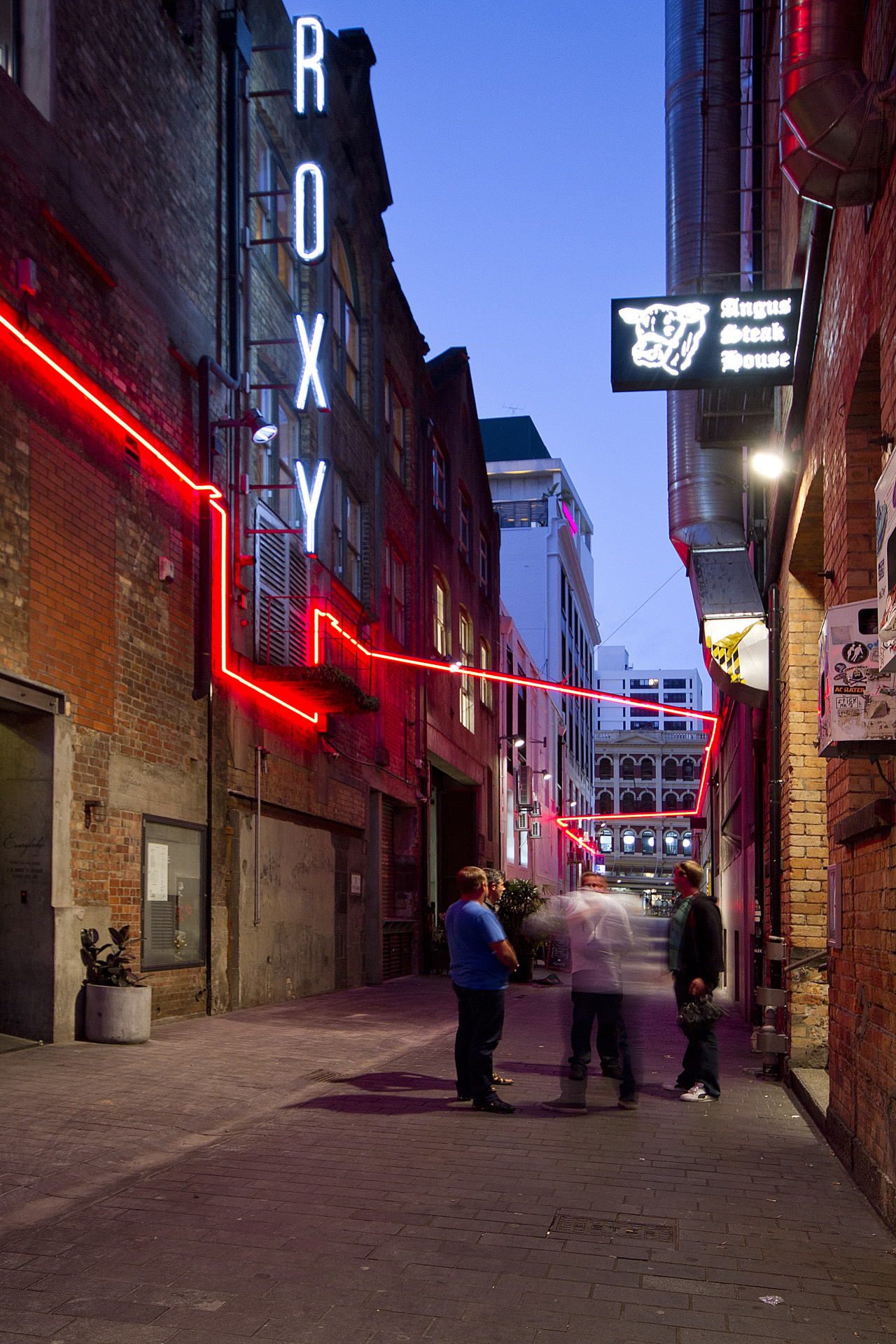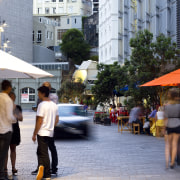Sector report on urban spaces in the CBD by Boffa Miskell landscape architect Michael Hawes
Economic impact of high-quality urban landscape design for CBD shared precincts by Boffa Miskell

The words public space and public realm are often interchanged, although in truth they are not exactly the same. When we think of public space, we tend to imagine parks and plazas, waterfronts and markets, but not the in-between spaces the streets, laneways, terraces, courtyards, views and even car parks that link up the larger spaces connecting our cities.
This entirety of outdoor spaces is the public realm, and although the specifics vary, creating this congenial shared precinct is what has shaped human settlements since the first cities were built.
The range of opportunities the public realm offers for achieving value is as diverse as its context, landscape and community. Much of this added value, environmental or community-based, is visible and relatively easy to evaluate. Less so is the economic value added to projects through good landscape and public realm design.
This is evident in public commentary on public space projects. This normally speaks to the more subjective beautification' aspects of public realm upgrades or public space improvements associated with commercial projects, because this is the easier-to-evaluate outcome of the project.
These beautification aspects will contribute to the popularity and identity of a project; initially adding value indirectly to the associated commercial offerings via increased customer footfall. However they are probably the most easily achieved aspects and can be the quickest to date.
This may be fine for quick wins or highly managed and constantly evolving urban environments with the luxury of long-term single leadership and ownership. But such an approach is not structural' or sustainable urban transformation in the long term. This needs to be able to support a range of known and future businesses without periodic reinvention.
Achieving greater economic potential from our urban infrastructure is a key outcome in supporting the intensification and sustainable growth of the urban environment. Landscape architects are leading the urban renaissance of our public realm. The strategic and multi-levelled approach to design, inherent in our training and thinking as landscape architects and urban designers, lends itself well to creating opportunities to add value.

A multi-levelled approach to design, with the diverse engagement of all parties is critical. Understanding the needs of the community and businesses, and a flexible approach to meeting these needs, allows for current and future aspirations and economic opportunities. For successful public spaces, these economic drivers also need to take into account transport, services, ecological and environmental aspects; and a respect for the heritage, culture and the character of each place.
There will also be statutory requirements, the strategic goals and policies of city plans; and the need for beautification. All of this requires a thorough design process one that considers all diverse aspects and needs, and one that results in intelligent landscape and public realm transformations. Such projects will not only enhance the physical environment, meet the needs of the community and promote diversity of urban life, but also do more to support business beyond increasing the passing potential-customer numbers.
There are numerous examples that demonstrate the real economic value that high-quality public space can add to a development and the surrounding properties and businesses. This is not just through the beautification and increased footfall, but also through the social value, health and wellbeing factors, proximity to and provision of certain amenities, and more broadly, the way a development can change the face of an area, allowing people to see new opportunities and potential.
Recent work by Auckland Council on its CBD shared-space streets has included pre-works surveys and post-completion evaluations. These seek to provide perception accounts as well as factual data on the transformational effects of the public realm upgrades that resulted from a highly engaged and multi-levelled approach to the formation and delivery of the designs. The following data comes from the post-completion evaluation and feedback on the first stage of the Fort Street Area Upgrade.
¢ 75% of property owners saw value in being located near or adjacent to a shared space
¢ 47% increase in consumer spending with a 429% increase in hospitality spending in this previously seedy part of the city centre
¢ Servicing the area is easier 75% of agents found it easier to make their deliveries in the shared space environment

¢ Vehicle volumes decreased by more than 25%.
¢ Average vehicle speeds have dropped between 2-8km per hour
¢ Drivers were experiencing only minimal delays to journey times (6-11 seconds) by travelling through the shared space, but 100% of drivers thought their journey through the area took the same time as or less than before
¢ 80% of those surveyed felt safer in the area now than they did previously, especially at night
¢ 91% of users were highly complimentary about the Fort Street area in 2011 following the upgrade compared with 17% of users in 2009
¢ 96% of users would continue to visit the Fort Street area and half of these said they would visit more often
¢ More people are now using Fort Street and Fort Lane. Pedestrian numbers during peak hours have increased by 54%. Over 19,700 people move through the shared space area daily
Story by: Trendsideas
Home kitchen bathroom commercial design
Homely, inviting – and lived in
Light-filled and harmonious
Nature infused







